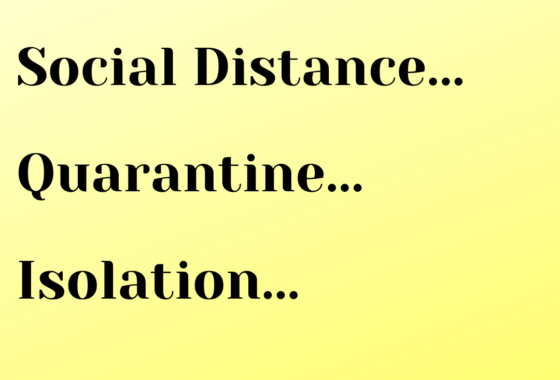
The Coronavirus pandemic has us all adapting to a new normal. People are turning their homes into offices and classrooms. A countless number of businesses have closed their doors until further notice. The world is moving at a much slower pace than before. Along with our everyday lives changing, we've also had to learn a new language. By language, we're referring to the terms: social distancing, quarantine, and isolation. Over the past months, we've heard these 3 terms used repeatedly. However, all 3 terms do not mean the same thing. Keep reading to find out what social distancing, quarantine, and isolation mean and what you should be doing to keep safe.
Social Distancing
Social distancing means staying away from people outside your home as much as possible. According to the CDC, people need to avoid all group gatherings & stay away from all crowded places. If you have to go out to get necessities or go to work, make sure to stay at least 6ft away from others. Doing all of this is what it means to social distance.
It is CRUCIAL to note that wearing face masks or other protective gear DOES NOT REPLACE social distancing. It's an additional step on top of social distancing!
Quarantine
Quarantine is the next level up from social distancing. If you believe you've been exposed to COVID 19, you will need to stay home for 14 days. During this time, keep track of the following symptoms; dry cough, fever, fatigue. According to the CDC, quarantining is specifically for those who have: come in close contact with someone who tested positive for COVID 19, traveled outside the US or have been on a cruise.
It's important to note that just because you live in an area that has a high COVID 19 rate, doesn't mean you have to quarantine every time you step out of the house. You want to limit your trips to public places as much as possible but, if you need to go out to get essential items, remember to practice your social distancing!
If you find yourself having to quarantine, ALL physical interactions outside of your home must cease. Additionally, you may want to limit contact with the people in your own home, especially those who are at a higher risk of developing complications from COVID 19 (i.e. people over the age of 65, those with compromised immune systems).
While in quarantine, no walks around your neighborhood or taking trips to public places are permitted. Depending on your situation, this may become difficult. If that is the case, relying on family or friends to get you essential items will be the best option. If you're all cleared after the 14 days, then you'll level down to social distancing again. However, if you're developing COVID 19 symptoms, then it's time for the next step, isolation.
Self Isolation
If you've tested positive for COVID 19, then you must stay away from the public and all people. If you live with others, you need to completely isolate yourself from them by being in your own room/area. To lower the risk of potentially passing on the virus, it's important to know the proper ways of disinfecting your home, especially shared spaces. Take a look at this guide that tells you how to properly clean your home during this pandemic.
The end of self-isolation truly depends on the individual and the severity of the case. The best option is to discuss with your doctor or public health officials what would be the best plan for your case.
If you've been using the wrong word, it's okay. During this time our best bet is to adhere to some form of distancing. We should all do our part in staying home as much as we can. Staying indoors doesn't just protect ourselves and others but, it helps the essential workers who aren't able to stay home. Let us all do our part and stay indoors together!
